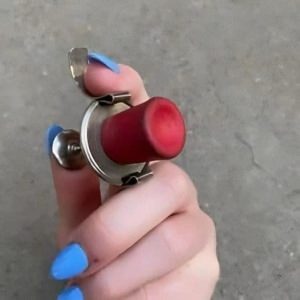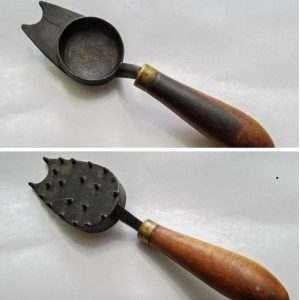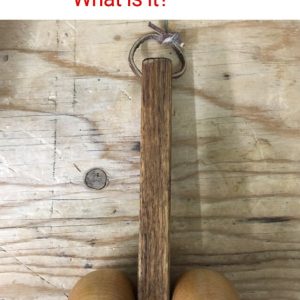Remember when families used to gather around the TV, carefully adjusting the rabbit ear antenna just to get the clearest picture? It might sound outdated now, but for decades, the rabbit ear TV antenna was a household staple. It wasn’t just a device; it was a symbol of family bonding, creativity, and the quest for the perfect signal. Let’s take a trip down memory lane and rediscover why this humble gadget holds a special place in our hearts.

The Birth of a TV Icon: The Rise of the Rabbit Ear Antenna
Long before cable TV and digital streaming became the norm, television signals traveled as analog waves. Back in the 1950s and 1960s, TVs didn’t just plug into a cable box. Instead, they relied on antennas to capture broadcast signals from local stations. This is where the rabbit ear TV antenna came into play.
With its two adjustable metal rods, the rabbit ear antenna could be twisted, bent, and positioned to catch signals. Families quickly learned that angling the rods differently could mean the difference between a fuzzy screen and a crystal-clear broadcast. Often, the ultimate hack involved wrapping the ends of the rods with aluminum foil to boost reception. As silly as it sounds, it worked!
The beauty of the rabbit ear antenna lay in its simplicity. Unlike outdoor rooftop antennas that needed professional installation, this little gadget was portable and practical. You could move it from room to room, depending on where the signal was strongest. It became synonymous with indoor TV reception for decades.
Video: Watch the video to discover how you can still get free TV in 2025 – it really works!
The Charm of Chasing the Perfect Signal
What made the rabbit ear antenna truly unique was how interactive it was. Unlike modern TVs that automatically scan for channels, these antennas required manual adjustments. One person would twist and turn the rods while another shouted from across the room, “That’s it! Don’t move!”
It wasn’t just a task; it was a team effort. Families bonded over finding that sweet spot where the picture was just right. Sometimes, just moving the antenna a few inches to the left or right made all the difference. If the picture started to get fuzzy during a favorite show, everyone jumped into action, adjusting the antenna until the image cleared.
And who could forget the quirky look of the antenna itself? Those two protruding rods, resembling rabbit ears, made it look almost whimsical. It wasn’t just a tool; it had personality. It wasn’t uncommon to see families leave the antenna in the perfect position for days—nobody wanted to risk losing that clear signal!
Family Gatherings: The Antenna as a Social Catalyst
Back in the day, TV wasn’t just background noise. It was a shared experience, and the rabbit ear antenna played a crucial role in that. Whether it was gathering for the evening news, a favorite sitcom, or a big sports game, the whole family would huddle around the TV.
Imagine this: It’s Saturday night. The aroma of popcorn fills the air. The kids are sprawled out on the living room floor while the parents relax on the couch. The big game is on, but suddenly—the picture flickers! Cue the frantic scramble to readjust the antenna. It wasn’t frustrating; it was just part of the ritual.
These shared moments of working together to get the best reception became cherished memories. It wasn’t just about the show; it was about the collective effort to make that show watchable. Looking back, it’s clear that the rabbit ear antenna wasn’t just a gadget—it was part of the family.
Iconic Moments Brought to Life by the Rabbit Ear

The rabbit ear TV antenna wasn’t just a piece of metal—it was a gateway to history. Think about it. Iconic moments like the moon landing in 1969 were witnessed through these antennas. Families sat in their living rooms, eyes glued to the grainy broadcast, watching Neil Armstrong take those famous steps. The world felt smaller, more connected, and it was all thanks to that trusty antenna.
Major sporting events, presidential speeches, and even unexpected news bulletins were all brought to life through that simple gadget. In a way, the rabbit ear antenna wasn’t just capturing signals—it was capturing moments in time.
Creative Hacks: The Quest for Better Reception
If you grew up using a rabbit ear antenna, you probably remember the foil trick. Wrapping the ends of the rods with aluminum foil seemed to magically enhance reception. Some even went a step further, attaching coat hangers or placing the antenna closer to windows.
There was something oddly satisfying about these makeshift solutions. It was like conducting a little science experiment in your living room. Maybe it wasn’t perfect, but it was proof that a bit of creativity could improve your TV-watching experience.
The Gradual Decline: Cable and Digital Dominate

As cable television gained popularity in the 1980s and 1990s, the rabbit ear antenna slowly became obsolete. Cable offered dozens of channels without the need for constant adjustments. People were willing to pay for convenience, and the humble antenna was left behind.
Later, satellite TV and digital broadcasting further pushed rabbit ears out of the picture. Today, most homes have flat-screen TVs with streaming services that make signal issues a thing of the past. The idea of manually tweaking metal rods for better reception now feels almost absurd.
Why We Still Love the Rabbit Ear TV Antenna
Despite its decline, the rabbit ear antenna remains a symbol of simpler times. It wasn’t about perfection; it was about making things work with what you had. It brought families together, not just for the shows, but for the experience of figuring it out together.
Some people still hold onto their old antennas as retro keepsakes, reminders of those nostalgic TV nights. And surprisingly, in some rural areas, rabbit ears are still in use, proving that even in a digital world, there’s something reliable about old-school technology.
A Bit of Nostalgia: Remembering the Antenna Era

In today’s fast-paced, high-definition world, it’s easy to forget the charm of rabbit ear antennas. They were unpredictable, often frustrating, but undeniably endearing. They required a hands-on approach that made watching TV feel like a mini adventure.
The memories tied to those antennas—the laughter when the picture flickered, the shouts of joy when it finally cleared—remind us that technology doesn’t just connect us to content; it connects us to each other.
Conclusion: A Gadget That Brought Us Closer
The rabbit ear TV antenna wasn’t just about reception. It was about family, teamwork, and making the best of what you had. It taught us to adapt, to get creative, and to appreciate the little victories—like finally getting that perfect picture.
While modern technology has pushed rabbit ears into the past, they’ll always have a special place in our memories. After all, they didn’t just deliver TV shows—they delivered moments of togetherness and joy. And in that sense, they’ll always be timeless.


